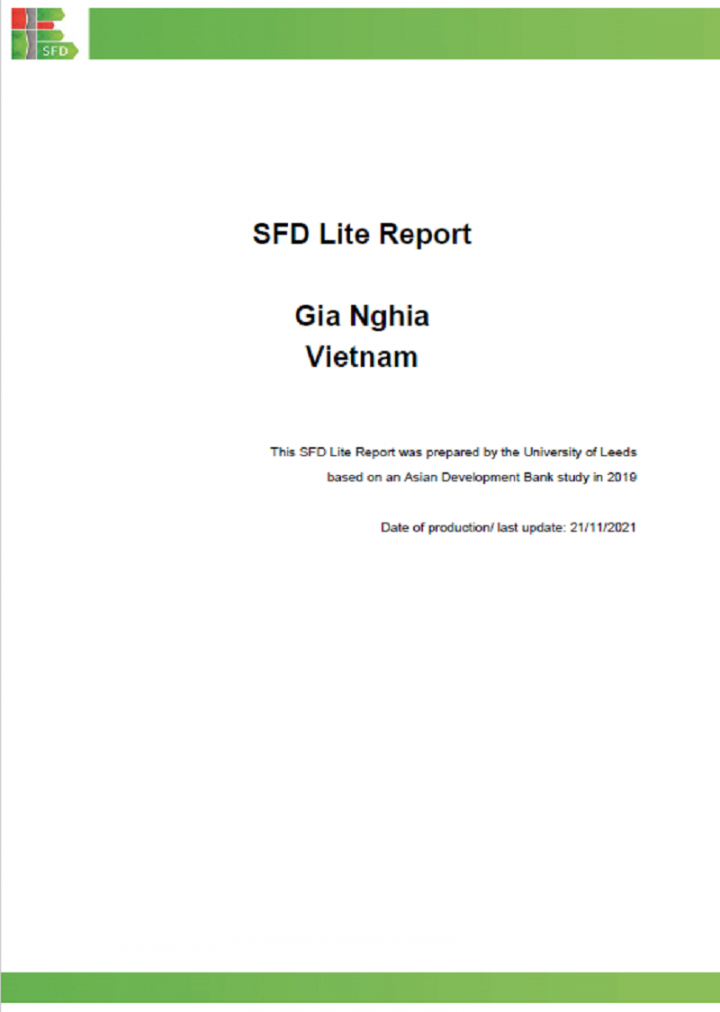
Published in: 2022
Pages: 9
Publisher:
University of Leeds
Author:
University of Leeds
Uploaded by:
SuSanA Admin
1220 Views
23 Downloads
Gia Nghia is a small but quickly growing and urbanising town. 87% of households have water supply provided on premises with projects underway to bring this to over 90%, and 100% of the population has access to a sanitation system (no open defecation is reported). Waste stabilisation ponds were constructed to treat wastewater, but these are not operational due to a lack of connections to the sewer network.
The population of Gia Nghia is estimated to be 67,783 in the year 2019. This is made up of 15,063 households with an average household size of 4.5 persons.
All households use some form of onsite sanitation (there is no sewerage network), the majority of which (69%) are so called ‘septic tanks’ which are in turn connected to different locations. Four fifths of these (56% of the total population) are connected to soak pits (T1A2C5 = 56%). A quarter of the population use tanks that have an open bottom and are not connected to anything. Fifty percent of these are estimated to be in locations where there is a significant risk of groundwater pollution (T2A4C10 = 13%).
Bibliographic information
University of Leeds (2022). SFD Lite Report – Gia Nghia, Vietnam. University of Leeds
Filter tags
East Asia & Pacific English Politicians and local decision makers Practitioners SFD Report














